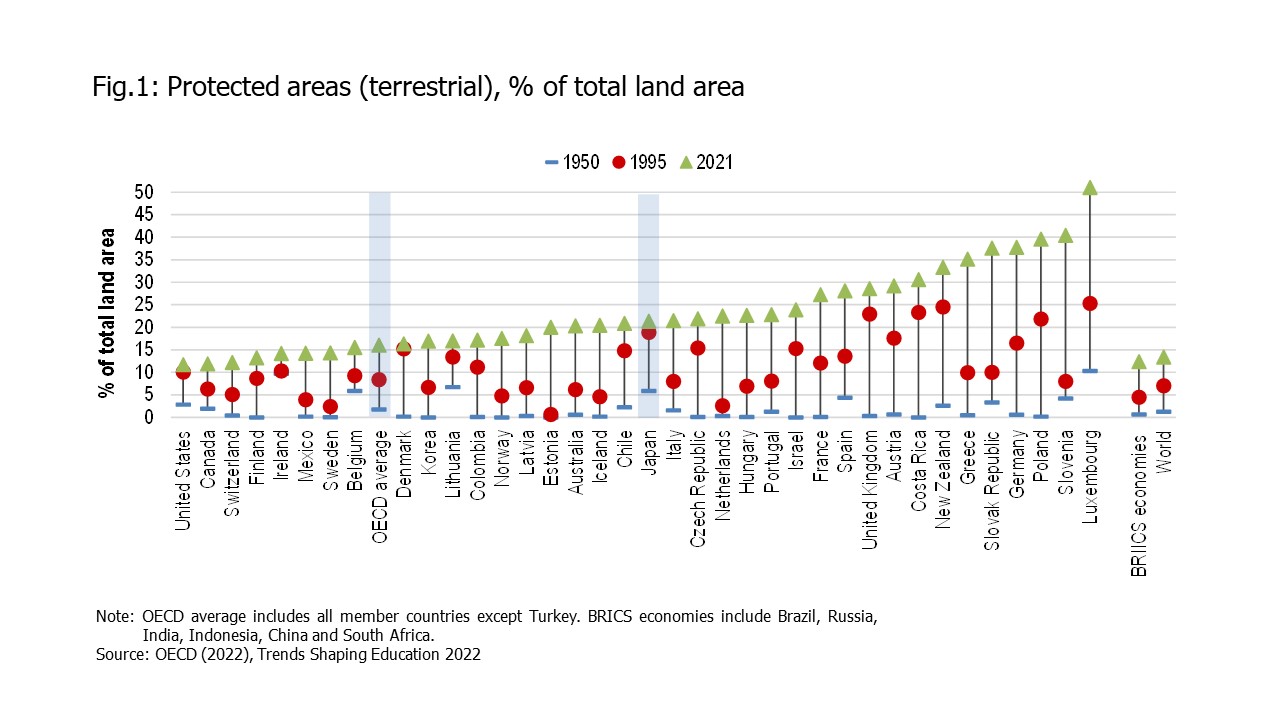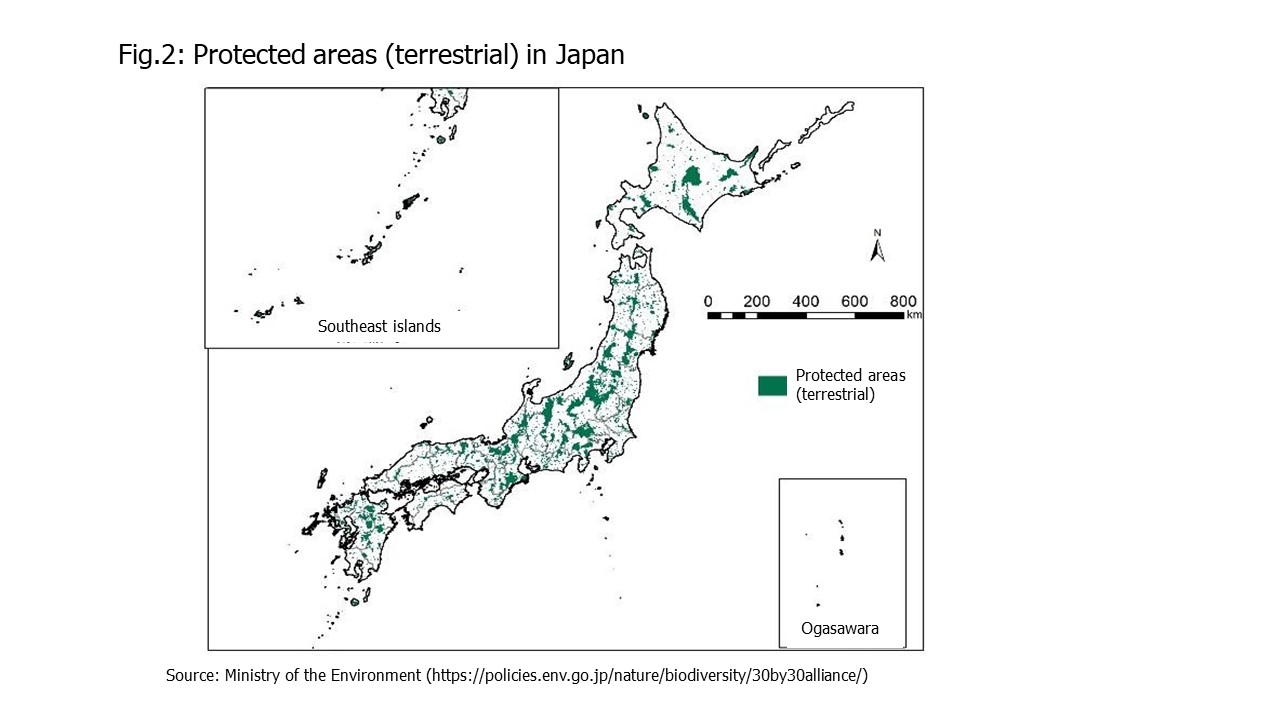30 by 30 Target in Japan
06/012023
Author: Kazuhiro Okuma
New global targets for biodiversity conservation were agreed upon as the "Kunming-Montreal Biodiversity Framework" at the COP 15 to the Convention on Biological Diversity last December. In Japan, a new "National Biodiversity Strategy" was adopted on March 31 this year. At this juncture, I would like to introduce Japan's situation in the field of biodiversity, which has not been covered much in our Chart of the Week.
The new framework sets various targets under the "nature positive" goal for 2030. One of the most notable ones is the "30 by 30," which calls for the conservation of 30% of terrestrial and marine areas by 2030. Countries are expected to strengthen their policies to achieve this goal. What is the status in Japan?
Figure 1 shows the ratio of conservation area to total land area for OECD countries. The ratio in Japan is 20.5%, which is considerably higher than the average of OECD countries (about 16%). In terms of ranking, the country is generally in the middle of the pack.

Figure 1 also shows changes over time, with Japan having been at a relatively high level from an early stage. In fact, when the 2010 Aichi Targets set conservation area targets (17% for terrestrial areas and 10% for marine areas by 2020), Japan had already achieved them for terrestrial areas.
Where are conservation areas established in Japan? Figure 2 provides an overview. They are set mainly in mountainous areas on the axis of the Japanese archipelago. Typical of conservation areas are national parks and nature conservation areas.

And now, 30 by 30 has been set as a new global target. Achieving this will not be easy. It will be necessary to establish conservation areas not only in mountainous areas, as in the past, but also in rural areas such as “Satoyama.” The challenge is also the conservation of marine area, which requires coordination with fisheries stakeholders.
It will be difficult to achieve this goal only with areas established by conventional legal and regulatory systems. Efforts to expand conservation areas, including the registration of area that is conserved by local communities and businesses as OECMs (Other Effective Area-based Conservation Measures), will be necessary. To this end, the "30 by 30 Alliance" has been launched in Japan with the cooperation of economic organizations and conservation groups. Efforts are underway to expand effective conservation areas through cooperation among governments, businesses, and citizens.
